I am currently trying to wire the logic for my dual 7-segment display.
I am stuck at my AND gate, and having tried an OR gate as well I have been unable to find why, regardless of input, the output of the gate is always supplying current.
Below the inputs are shown as leading to nothing, Va is set on my DC power supply as "5V FIXED 3A."
In accordance with the diagram, the 7408 chip is being supplied the 5V in the top right and grounded on the bottom left.
Could anyone point out what mistake I am making that is causing for this AND gate to supply current regardless of the input?
Thank You!

